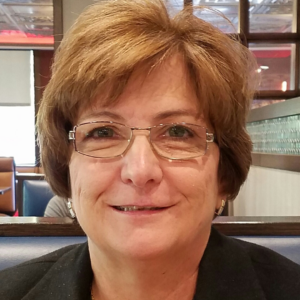Monitoring tech: Trending upwards
In a study last year that garnered a surprisingly small amount of buzz, BCC Research reported that the global market for elder care technology products was worth approximately $2.6 billion in 2010 and should grow to about $4 billion in 2015. Of that number, safety monitoring technologies-those that monitor a person’s activities of daily living for falls and wandering as well as track health and wellness, among many other uses-were valued at $2.3 billion in 2010 and are expected to reach $3.4 billion by 2015, the study concluded.
As the healthcare industry as a whole pushes toward the incorporation of new technologies to aid its sustainability, it seems long-term care providers have answered the call, looking to products that passively observe the well-being of their residents. Part of what pushes this particular segment of healthcare is the direction of some potent advisory associations, perhaps none more influential than the Center for Aging Services Technologies (CAST). In the December 2010 issue of Long-Term Living, CAST Director Majd Alwan, PhD, spoke to Editor-In-Chief Patricia Sheehan about these safety technologies and confirmed what BCC Research’s report is forecasting: Continued growth in this area of product development and consumption is certainly expected.
At last fall’s American Association of Homes and Services for the Aging (AAHSA) Annual Meeting, with which CAST is affiliated, several of these safety monitoring technologies were exhibited in AAHSA’s “Idea House,” which allowed attendees to actually see how they are intended to be used. For those that were skeptical, this up-close vantage was especially important in changing opinions.
“Most people relate resident security to the old ‘Help, I’ve fallen and I can’t get up’ ads from TV,” says Jeff Noce, CEO of WellAWARE Systems, a developer of sensor technology for monitoring residents that appeared in AAHSA’s Idea House. “It has evolved since then and providers can now be much more proactive in detecting emergent health conditions.”
In terms of the almost staggeringly rapid evolution of such technology, another Idea House exhibitor agrees. Liddy Manson, CEO of BeClose, which creates wireless monitoring products aimed at maintaining senior independence, says the pace of product development has definitely picked up.
As the healthcare industry as a whole pushes toward the incorporation of new technologies to aid its sustainability, it seems long-term care providers have answered the call, looking to products that passively observe the well-being of their residents.
“From telemedical devices [such as glucometers, blood pressure cuffs, and wireless scales] that track daily health statistics and relay them automatically to doctors, to iPads and communications software like Skype, to sophisticated home monitoring and tracking devices, manufacturers are coming up with ways for the elderly or infirm to be much more closely connected to their caregivers and loved ones,” Manson says.
Among the popular safety technology options that providers are turning to at the moment, aside from sensors and monitors, are Personal Emergency Response Systems (PERS), Noce says. PERS are devices that the resident wears on a pendant or a wristband and, in the event of a fall or emergency, are activated by the resident, sending an automatic alert to a responder.
“What’s less common, though, is technology that connects the resident, family, and facility in one real-time set of information,” Manson says. “My prediction is that area will evolve over the next five years.”
Perhaps at this point, the only thing that might hold back the advancement of these technologies is backlash from residents who feel being monitored at all hours of the day crosses ethical boundaries or invades their privacy. For manufacturers, this is indeed a talking point that guides product development. “Many residents are concerned with technologies that are too ‘Big Brother-like,’” Noce says. “People do not want to be ‘monitored.’” The less intrusive the system, the more likely it will be accepted by residents, he says.
There’s no denying the bright future for creative technological advancements with crossover into healthcare. As more reports like the BCC Research study are released in the coming years, witnessing the progression of these safety technologies should be an exciting, educational experience for all in long-term care-the ultimate beneficiary of which is, of course, the resident population. LTL
Long-Term Living 2011 January;60(1):60
I Advance Senior Care is the industry-leading source for practical, in-depth, business-building, and resident care information for owners, executives, administrators, and directors of nursing at assisted living communities, skilled nursing facilities, post-acute facilities, and continuing care retirement communities. The I Advance Senior Care editorial team and industry experts provide market analysis, strategic direction, policy commentary, clinical best-practices, business management, and technology breakthroughs.
I Advance Senior Care is part of the Institute for the Advancement of Senior Care and published by Plain-English Health Care.
Related Articles
Topics: Articles , Technology & IT











